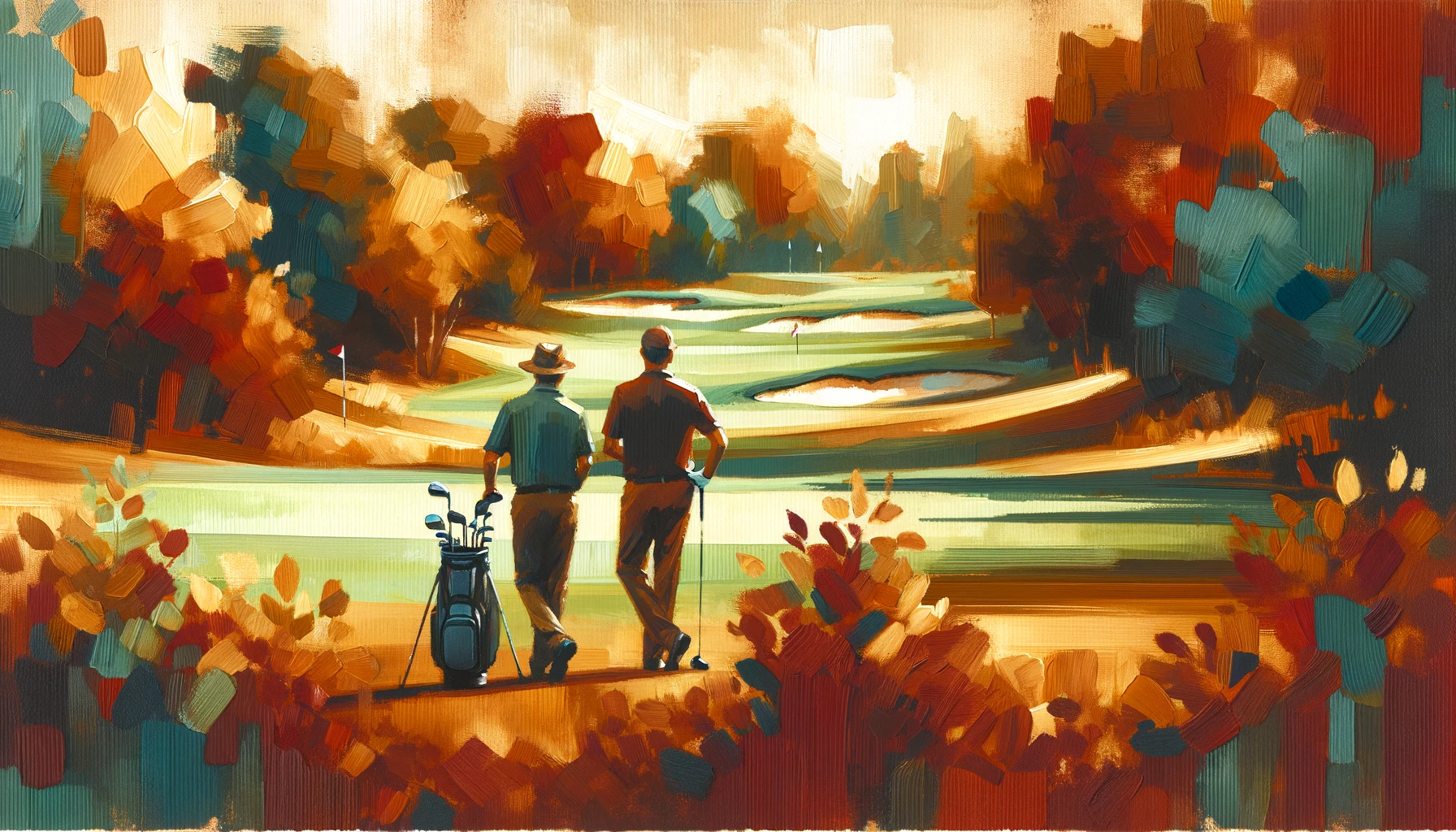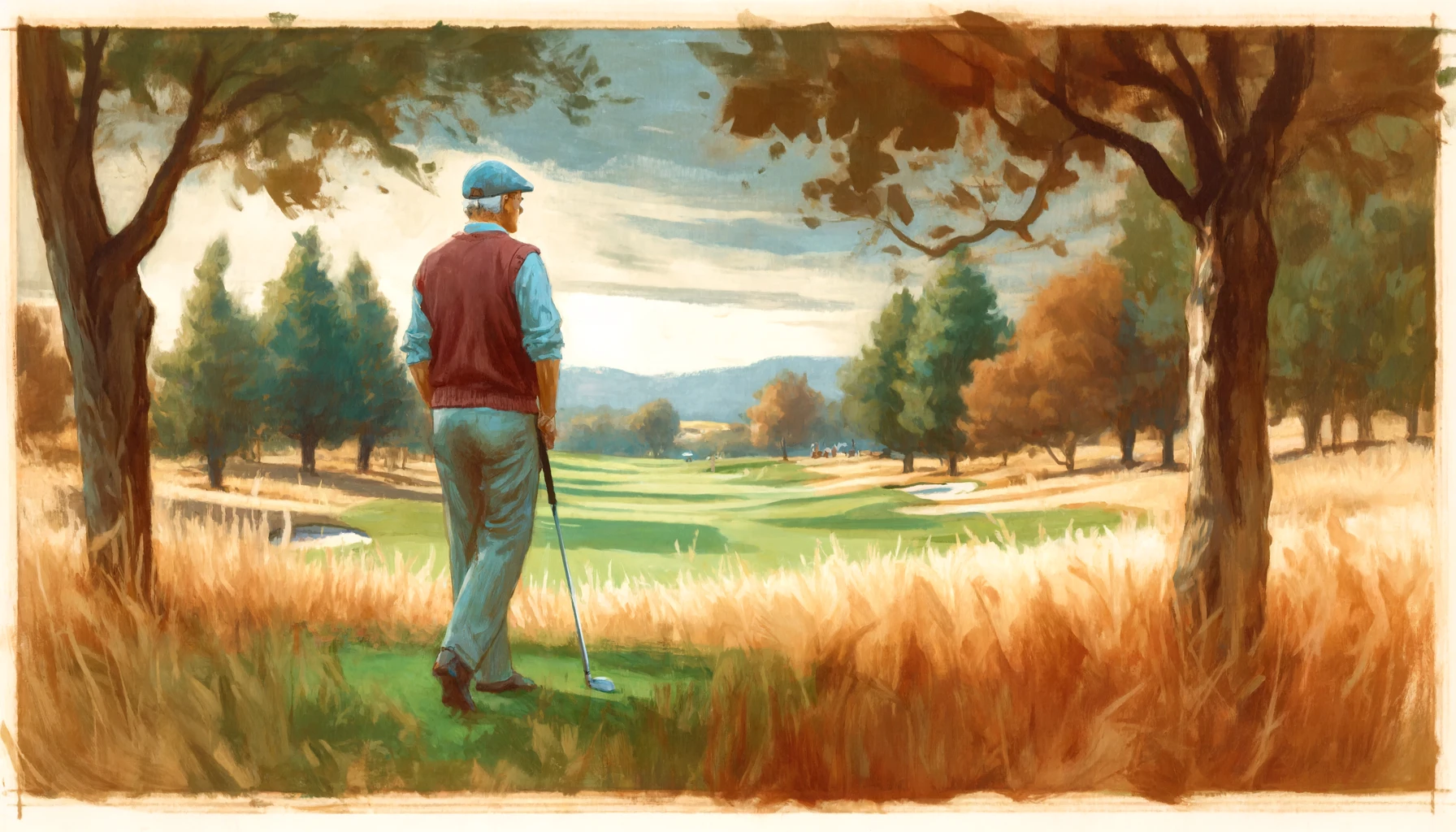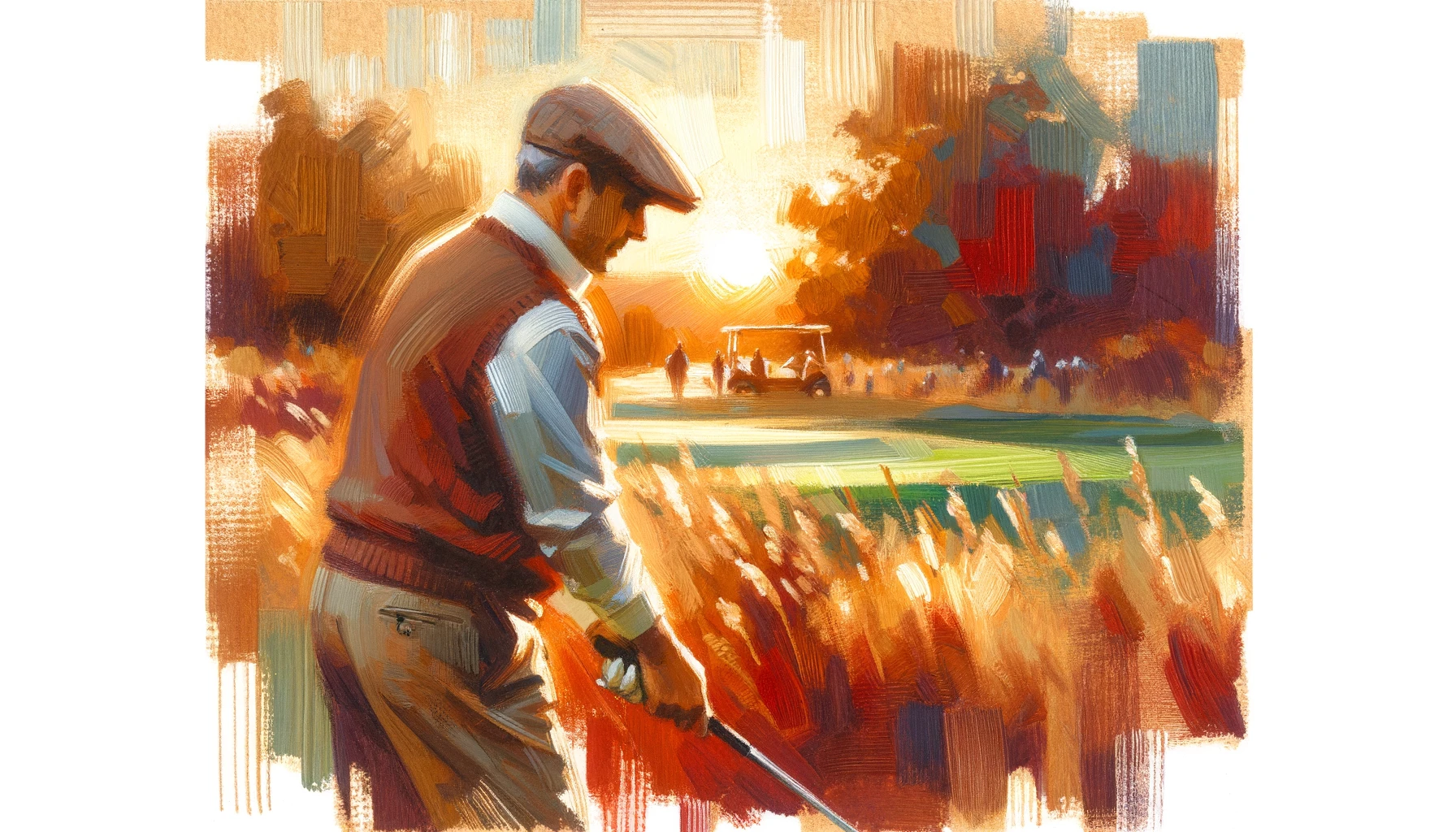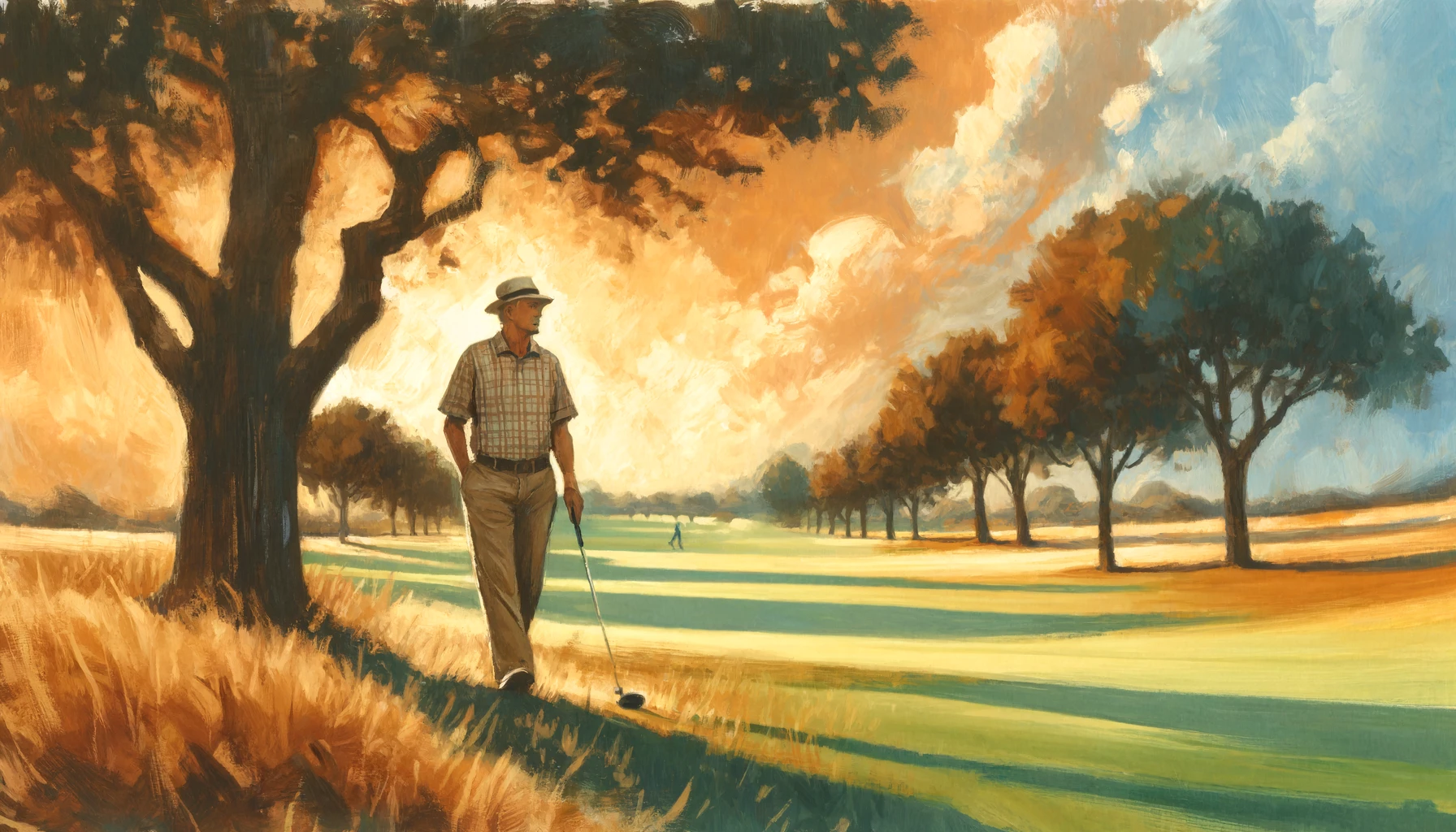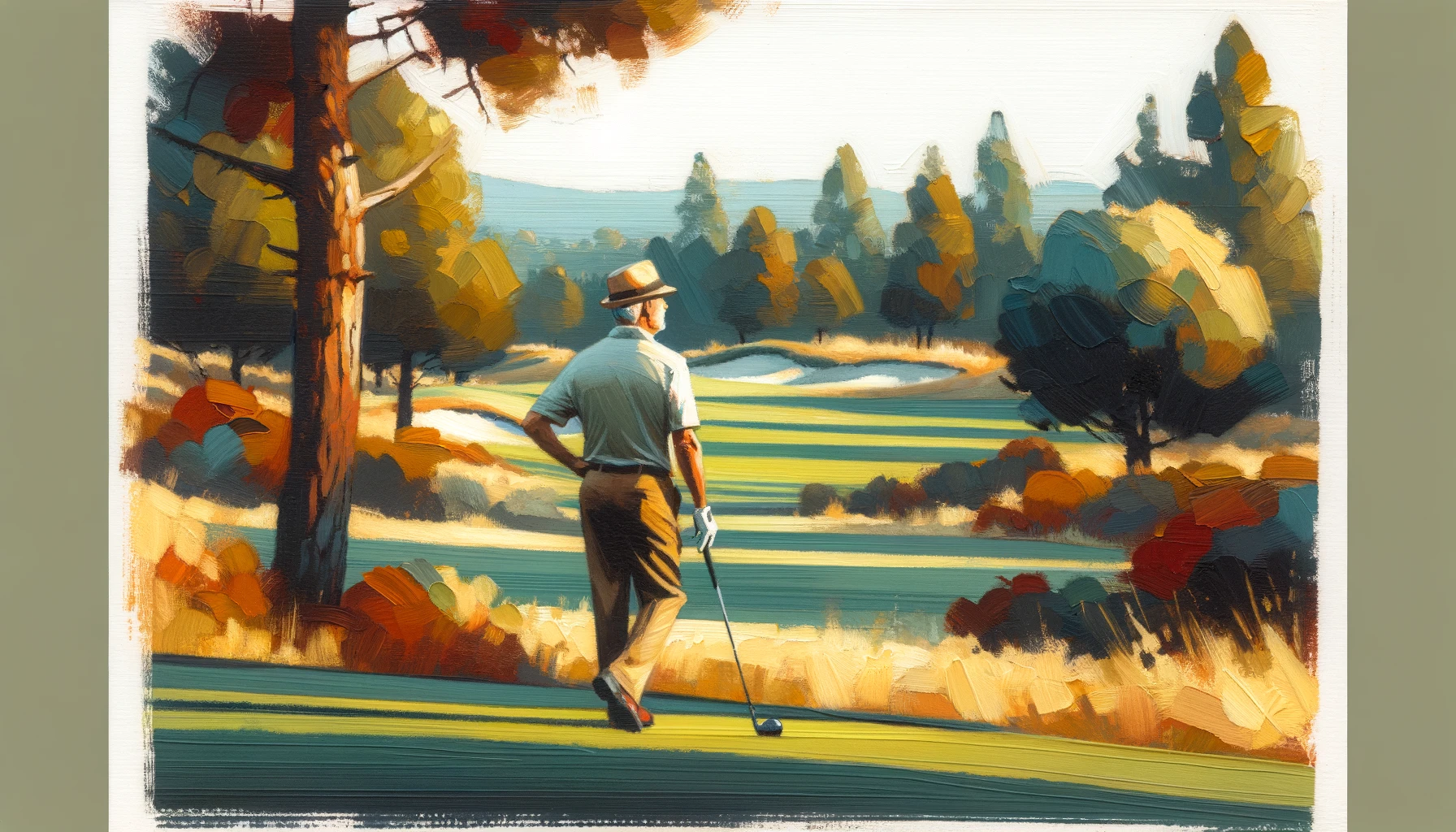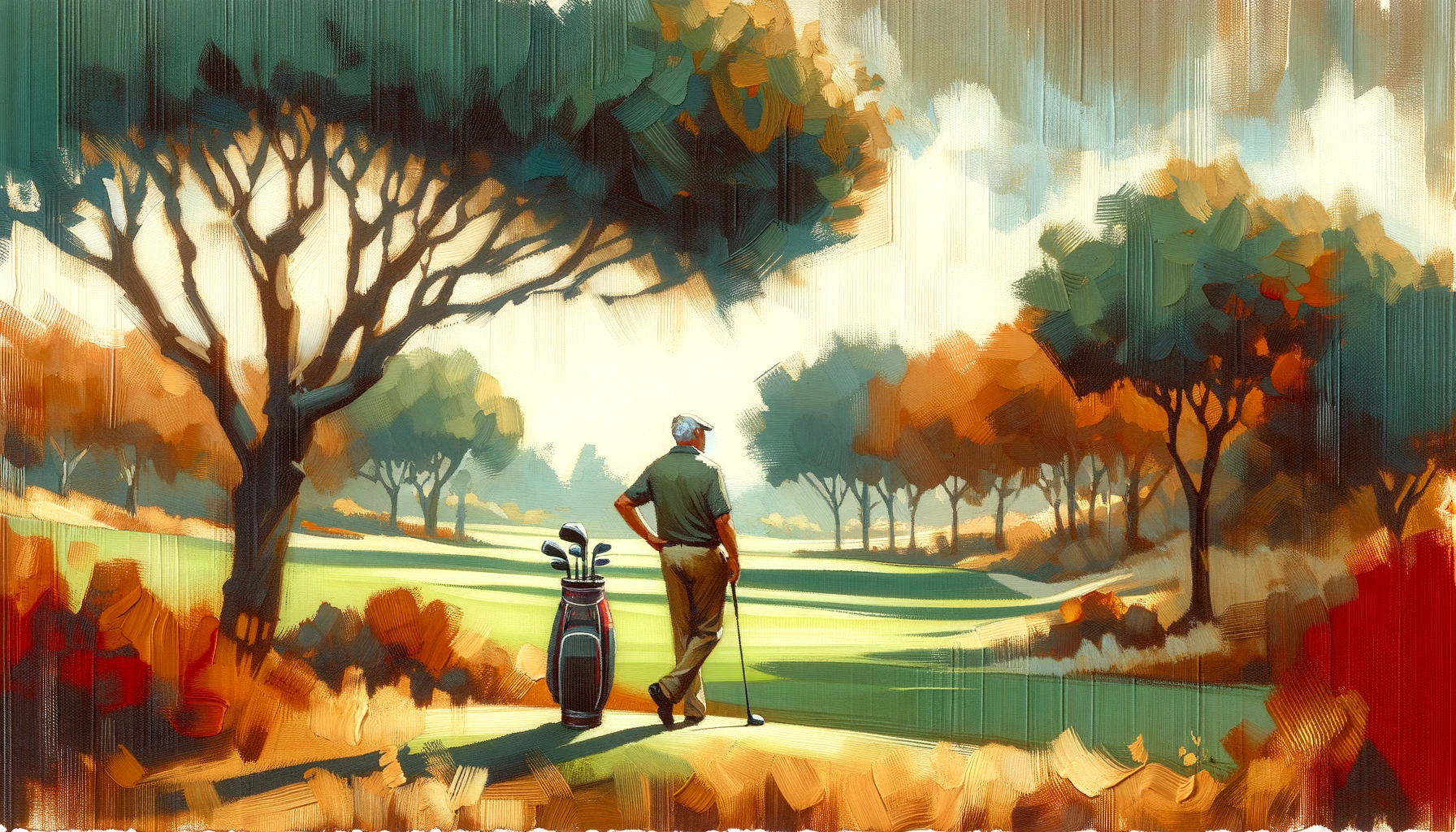Mastering the Short Game: A Weekend Golfer's Guide to Dominance on the Course
Mastering the short game is the golfer's secret weapon to lowering scores and outshining competitors. Whether you're struggling with putts, chips, or bunker shots, this guide offers practical advice and strategies to refine your technique, improve accuracy, and boost confidence on the course. With key takeaways for quick reference and a detailed FAQ section, you're equipped to tackle the short game challenges head-on, turning potential weaknesses into strengths. Dive into the art of the short game and transform your approach to golf, one stroke at a time.
Ah, the short game. It's where dreams are made and lost on the golf course, isn't it? If you're like me, you've experienced the thrill of a perfectly executed chip shot just as much as the frustration of a missed putt that seemed so simple. The journey to mastering the short game is filled with highs and lows, but it's essential for anyone who wants to lower their score and truly compete.
You see, the short game is often underestimated, yet it's crucial to becoming a well-rounded golfer. The agony of dropping shots around the green can be maddening, leading to that all-too-familiar sense of disappointment as you walk off the 18th. It's not your fault; the information out there can be overwhelming, leading to confusion and inconsistency.
Fear not, for you are not alone in this quest for short game mastery. The thought that you might never get to enjoy the sweet taste of a well-earned birdie because of short game woes is a fear that many of us share. But it's not just about lowering scores; it's about the pride in your game, the respect from your peers, and the sheer joy of playing well.
That's where "Mastering the Short Game: A Weekend Golfer's Guide to Dominance on the Course" comes in. This guide is your roadmap through the trials and tribulations of the short game. From putting techniques that seem almost magical, chipping tips that will have you up-and-down from anywhere, to bunker play secrets that'll make sand traps less daunting – this guide has got you covered. We're going to dive deep into the techniques, strategies, and mindset shifts necessary to turn your short game from a weakness into your strongest asset.
Are you ready to transform your game, lower your scores, and become the golfer you've always dreamed of? Let's get started on this journey together. The fairway awaits.
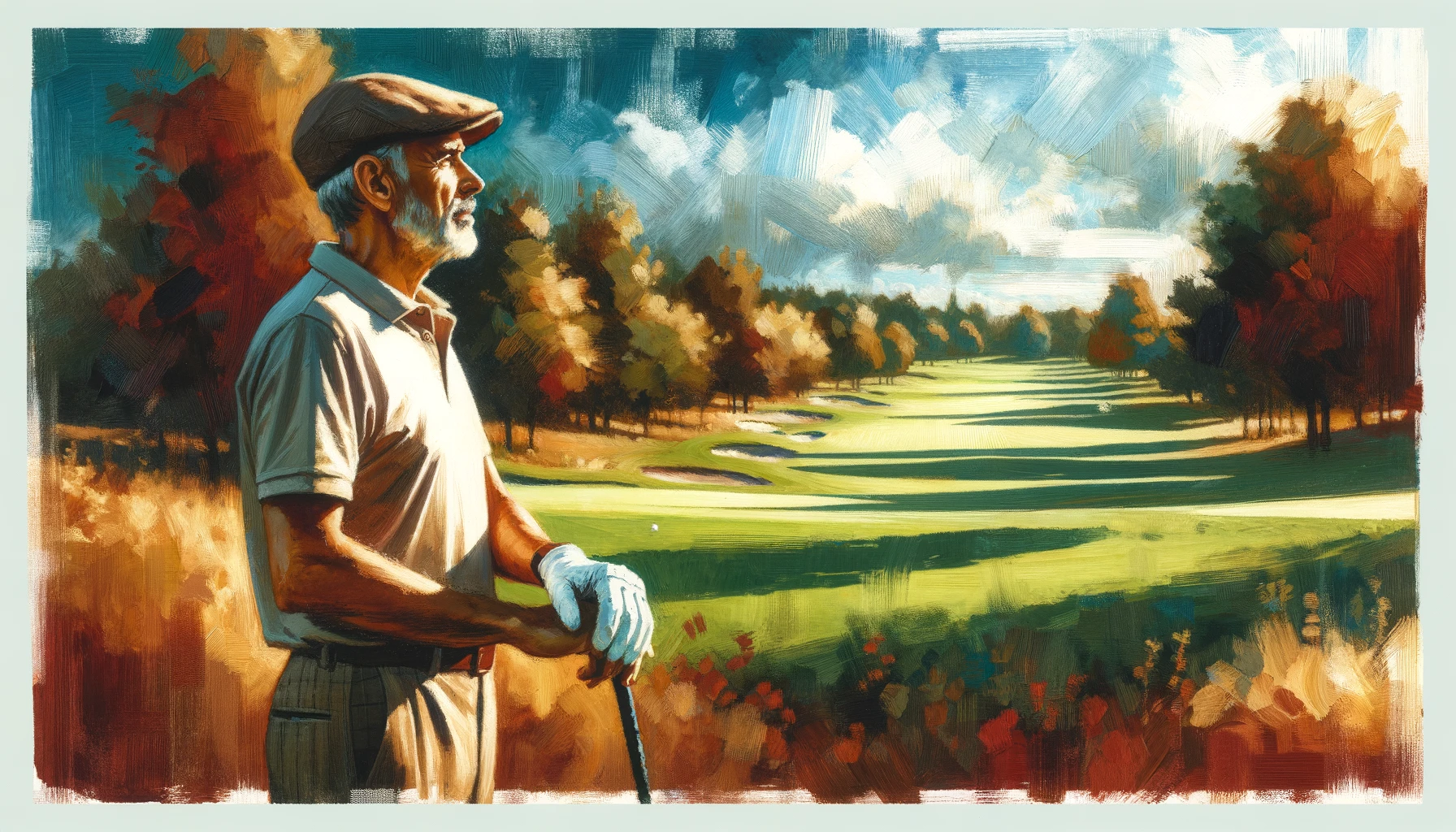 Discover the art of the short game on a tranquil course.
Discover the art of the short game on a tranquil course.Mastering the Short Game: The Key to Scoring in Golf
Every weekend golfer knows the feeling: you've navigated the fairway successfully, only to be thwarted by the nuanced challenges of the short game. It's here, in these critical moments, that your score is truly made or broken. As someone who has walked in those shoes, I've learned that mastering the short game isn't just a skill; it's an art.
My journey began on a course much like any other, filled with hope and a bag full of the latest gear, believing that equipment was the key to my success. It wasn't long before I realized that my scores didn't improve simply because I had the newest driver or the most expensive putter. The real game changer? It was when I decided to focus on the short game.
Diving into the world of putting and chipping, I discovered a realm of golf that I had grossly underestimated. I practiced reading greens, controlling distances, and refining my technique. It was a humbling experience, marked by missed shots and frustration, but also by gradual improvement and increasing confidence.
Putting is both a science and an art. It requires an understanding of the green's topography and a touch that feels almost intuitive. Here's how I tackled it:
- Understanding the Basics: I learned to read the green, starting with the basics of identifying slopes and understanding how they affect the ball's path.
- Advanced Techniques for Reading Greens: I explored how different grass types and weather conditions influence the speed and direction of the putt.
- Exercises to Control Distance: I practiced drills that focused on distance control, understanding that power is nothing without precision.
The "Fairway Mastery Blueprint" was a game-changer for me. It provided a structured approach to tackling the short game, focusing on gradual improvement, personalized strategies, and most importantly, enjoying the process.
Today, my approach to the golf course is vastly different. I no longer dread the short game; I embrace it. My scores have improved, but more than that, my enjoyment of the game has increased exponentially. I've learned to appreciate the nuances of golf and the satisfaction that comes from a well-played hole.
Mastering the short game has been a journey of personal and skill development. It's not just about lower scores; it's about becoming a more confident, competent golfer. To my fellow weekend warriors, I say this: the path to improvement is paved with patience, practice, and persistence. Embrace the challenge of the short game, and you'll not only improve your scores but also your love for this beautiful game.
Are you ready to transform your approach to the short game and see where this journey can take you?
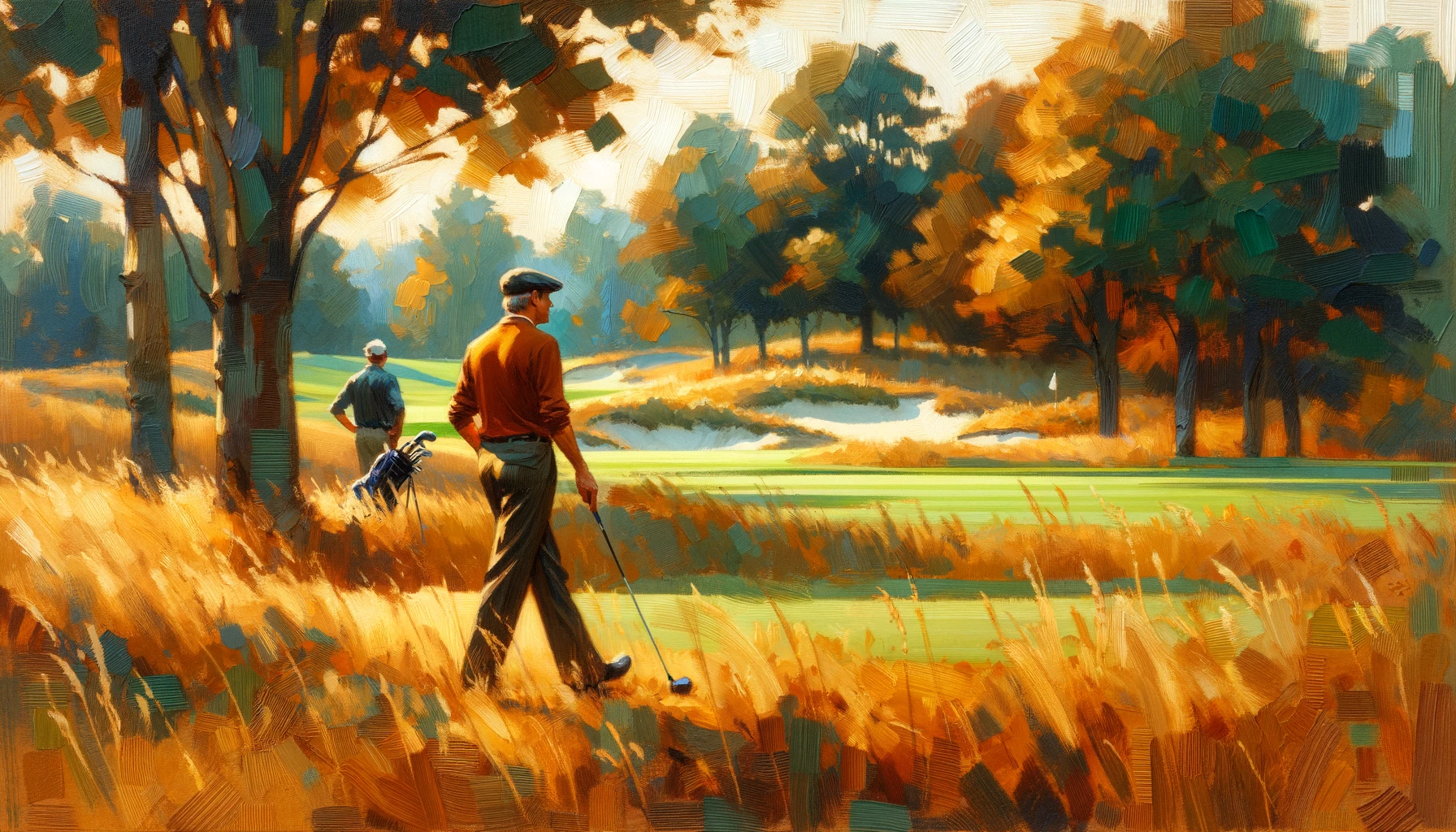 Embrace the journey of short game mastery among the trees.
Embrace the journey of short game mastery among the trees.Practicing Chipping and Pitching: The Secret Weapons of the Short Game
As we delve deeper into the art of mastering the short game, it becomes evident that chipping and pitching hold keys to unlocking lower scores. These aspects of golf, often overshadowed by the glamour of long drives, are where games are refined and victories are secured.
Chipping vs. Pitching: Knowing the Difference
Understanding the distinction between chipping and pitching was my first step towards short game mastery. Chipping is a shorter, more controlled shot used near the green, usually when you're close enough to putt. Pitching, on the other hand, is a lofted shot designed to cover more distance with a higher trajectory, perfect for clearing hazards or navigating tricky pin placements.
Drills for Improving Accuracy and Control
My practice sessions soon incorporated specific drills focused on both chipping and pitching. For chipping, I worked on landing spots, practicing with different clubs to see how the ball reacted on landing. Pitching required a focus on loft and landing soft; I practiced with my wedges, aiming to hit specific targets with a variety of swing lengths.
A Turning Point
I'll never forget the round where my practice started to pay off. On a par-4 dogleg right, my approach shot found the greenside bunker. Feeling confident, I chose to pitch over the bunker instead of playing it safe. The ball soared, landed gently on the green, and rolled close to the pin, setting up an easy putt for par. It was a moment of validation for all the hours spent refining my short game.
The Importance of Short Game in Your Golf Strategy
Integrating chipping and pitching into your golf strategy is non-negotiable for lowering scores. These shots provide the bridge between a good approach and a great score. They are your best tools for navigating the unpredictable and often challenging terrain of the course's closer quarters.
The Ongoing Journey
Mastering chipping and pitching is a journey that never truly ends. Each round presents new challenges and opportunities to refine these skills. But with patience, practice, and a willingness to learn, you'll find that these aspects of the short game become your greatest allies on the course.
As we wrap up this section, I encourage you to embrace the nuances of chipping and pitching. Practice with purpose, experiment with different shots, and always seek to improve. The path to golfing excellence is paved with the mastery of these crucial skills. Are you ready to up your game and become a force to be reckoned with on the golf course?
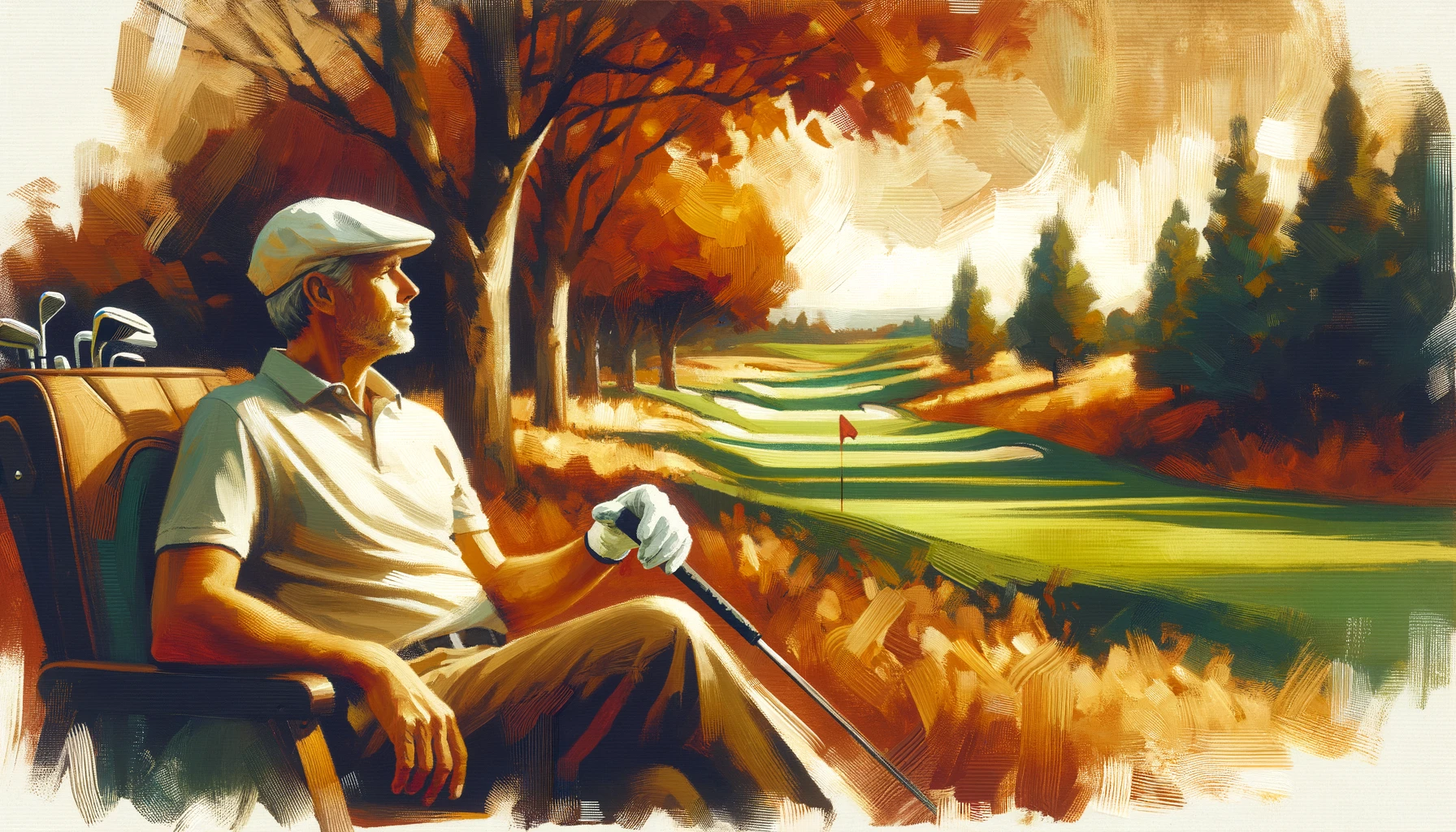 Strategies for the short game, revealed in warm hues.
Strategies for the short game, revealed in warm hues.Conquering the Sand: Bunker Play Basics for the Weekend Golfer
The bunker: a weekend golfer's nemesis. Yet, mastering bunker play is a rite of passage for anyone serious about improving their game. Here's how I turned my sand trap struggles into triumphs.
Strategies for Escaping Sand Traps
The key to effective bunker play is understanding the sand. Unlike a typical fairway or green shot, the goal in the sand is not to hit the ball first. Instead, you aim to use the sand to lift the ball out. This requires a different approach and mindset. I practiced hitting the sand first, a couple of inches behind the ball, focusing on getting under it to project it upwards with the right amount of force.
Minimizing Strokes from the Bunker
Reducing strokes from the bunker comes down to consistency. I worked on developing a reliable swing that could get me out of the sand in one shot, every time. This meant adjusting my stance, opening the clubface, and practicing swings that focused on follow-through.
A Lesson Learned: The Importance of Bunker Confidence
One of my most memorable golf lessons came unexpectedly from a bunker shot gone right. After days of practice, I found myself in a deep greenside bunker with a high lip. The old me would have panicked. But with my newfound skills and confidence, I swung through, the ball sailed beautifully over the lip and landed softly on the green. It was a moment of pure joy and a testament to the importance of bunker play in one's golf arsenal.
Embracing Bunker Play in Your Game
Embracing bunker play, rather than fearing it, transforms your game. It's about more than just escaping sand traps; it's about turning a potentially game-ruining obstacle into an opportunity to impress and even save strokes.
The Path to Bunker Mastery
Mastering bunker play is a journey of patience, practice, and persistence. It's about embracing the challenge, learning the right techniques, and applying them with confidence on the course. For weekend golfers looking to improve their short game, conquering bunker play is not just an option; it's a necessity.
Are you ready to turn your bunker play from a weakness into a strength? Remember, the sand isn't your enemy; it's your canvas. Let's master the art of bunker play together.
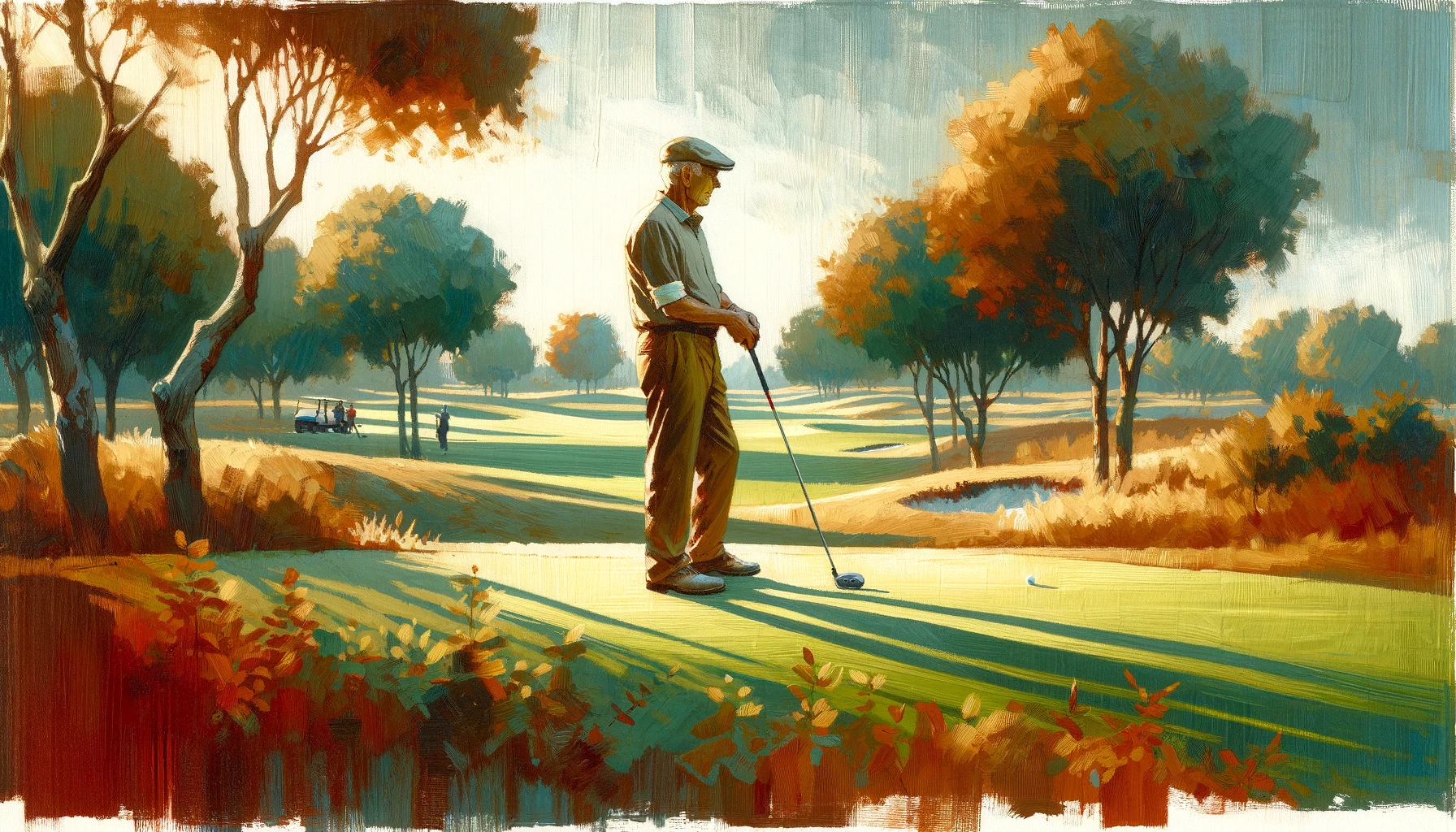 A blend of passion and precision on the golf course.
A blend of passion and precision on the golf course.Key Takeaways: Mastering the Short Game
Mastering the short game is a cornerstone of improving your overall golf performance. It's not just about lowering your scores; it's about enriching your life on and off the course. Here's a concise summary of what we've covered, reflecting the Golfer's Growth Journey and the Fairway Mastery Blueprint:
- Putting Technique: The foundation of a solid short game. Focus on:
- Reading greens effectively.
- Controlling distance with precision.
- Chipping and Pitching: Essential skills for accuracy and control around the greens. Practice to:
- Understand the difference between chipping and pitching.
- Improve your accuracy with targeted drills.
- Bunker Play Basics: Turn sand traps from obstacles into opportunities. Learn to:
- Confidently escape bunkers with minimal strokes.
- Use the sand to your advantage, not as a deterrent.
Your Journey Awaits
Mastering the short game is a journey of continuous improvement and discovery. It's about more than just golf; it's a pathway to personal growth, enriched experiences, and lasting friendships. Embrace the challenge, enjoy the process, and watch as your game—and your life—transforms.
Remember, every round, every hole, and every shot is an opportunity to learn, improve, and succeed. Are you ready to embark on this journey and master the art of the short game?
FAQ: Mastering the Short Game in Golf
What is the ideal equipment for short game improvement?
What is the ideal equipment for short game improvement?
The right wedges, putters, golf balls, gloves, and shoes can significantly enhance your short game. Select wedges and putters that fit your play style, considering factors like loft and feel. Soft-cover golf balls are recommended for better control and spin.
You're probably thinking mastering the short game is less important than driving, right?
You're probably thinking mastering the short game is less important than driving, right?
Actually, refining your short game can have a more immediate impact on lowering scores than improving your long game. Short game skills, particularly putting and chipping, directly affect your ability to save strokes on each hole.
You might believe that expensive equipment is necessary for a better short game, right?
You might believe that expensive equipment is necessary for a better short game, right?
Well, the truth is that practice and technique far outweigh the need for high-end gear. Simple adjustments in stance, grip, and swing can dramatically improve your short game without breaking the bank.
What are effective drills for mastering chipping?
What are effective drills for mastering chipping?
Practicing with your weight on your front foot can improve chipping accuracy by ensuring better contact with the ball. Additionally, practicing distance control through varying swing lengths and club selection is crucial.
How do I make solid contact when chipping?
How do I make solid contact when chipping?
Ensuring solid contact involves a balanced setup with weight slightly forward, a controlled backswing, and keeping hands ahead of the ball at impact. Practicing on keeping your downswing smooth and avoiding steep angles can also improve contact.
What are the keys to mastering the extra short chip shot?
What are the keys to mastering the extra short chip shot?
Using a narrow stance, gripping low on the club, and mimicking a putting stroke motion can help control the power and accuracy of your chip shots. Keeping thumbs down and using a slower backstroke also contributes to precision.
How do I improve my putting technique?
How do I improve my putting technique?
Focusing on the fundamentals, like grip, posture, and reading the green, is essential. Practice lag putts for better distance control and to minimize three-putts. Regular practice on different greens can enhance your adaptability and confidence.
Concerned that improving your short game takes too much time?
Concerned that improving your short game takes too much time?
Consider this: Short game practice can be done almost anywhere, from your backyard to the practice green. It's about quality, not quantity, and even short practice sessions can lead to significant improvements.
Worried that short game skills won't help in competitive play?
Worried that short game skills won't help in competitive play?
Remember, many matches and tournaments are won or lost on the green. Developing a strong short game not only lowers your scores but also increases your confidence, making you a formidable competitor.
Thinking mastering the short game is too complex?
Thinking mastering the short game is too complex?
The beauty of golf lies in its simplicity. Focusing on basic techniques and consistent practice can simplify the learning process, making the game more enjoyable and your scores lower.
